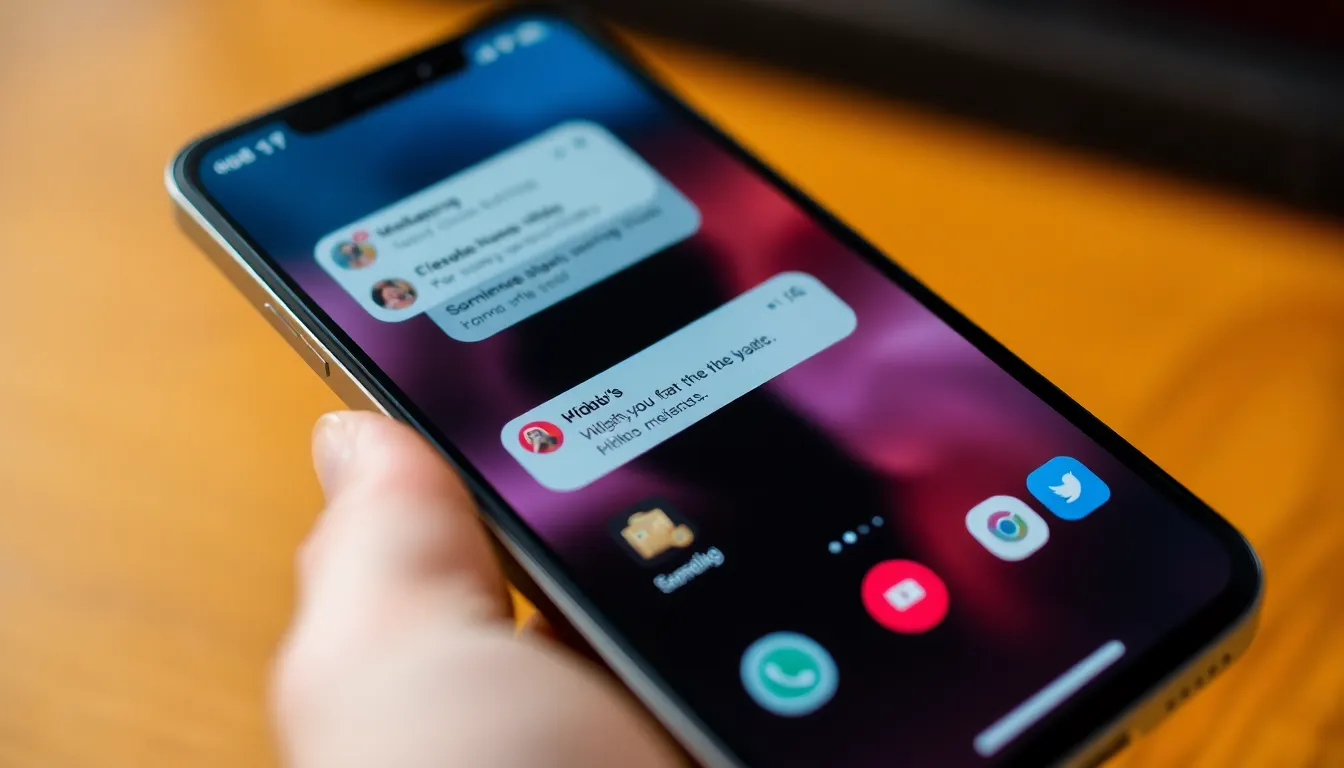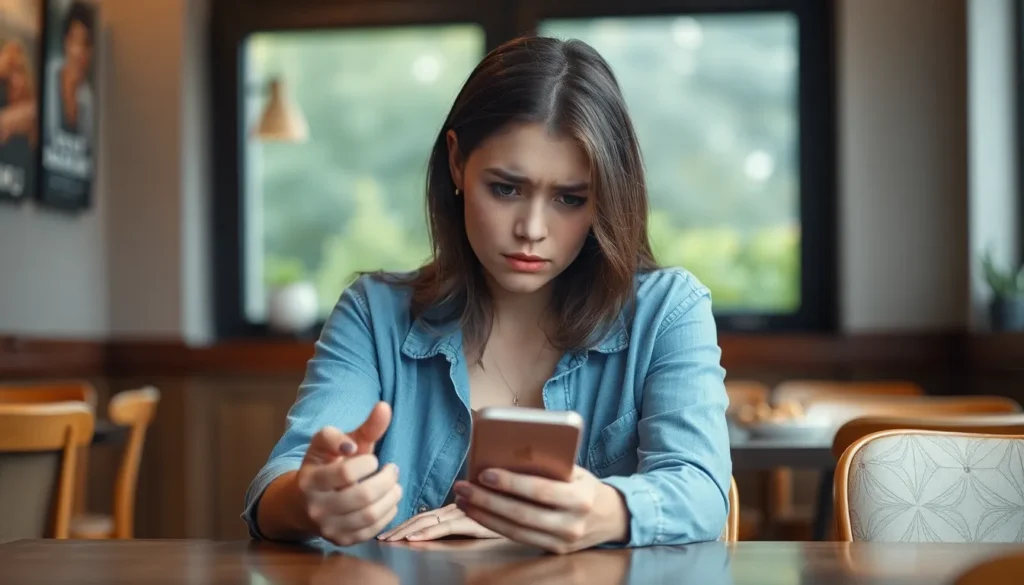Table of Contents
ToggleEver tried to reach out to someone only to feel like your messages are disappearing into a digital black hole? If you’re an iPhone user, you might be wondering if you’ve been unceremoniously kicked to the curb with a block. It’s a modern-day mystery that leaves many scratching their heads and checking their phones like they’re searching for lost treasure.
Common Signs You Are Blocked
Several indicators suggest someone may have blocked an iPhone user. Recognizing these signs can clarify communication status and alleviate uncertainty.
Call Behavior
Unusual call behavior often signals a block. Calls may go directly to voicemail without ringing. Inconsistent ringing sounds during attempted calls also indicate potential blocking. Users might experience a consistent “number not available” message, reinforcing the possibility of being blocked. Frequent failures in connecting could heighten suspicion, especially if previous communications flowed smoothly.
Message Delivery Issues
Message delivery issues provide further clues regarding block status. Messages sent through iMessage may show a single gray tick mark instead of dual blue ticks. This one tick denotes unsent messages, implying they haven’t reached the recipient. Additionally, texts seem to skip the “delivered” status, further raising concerns. Users may also notice that their texts don’t receive replies, which can be a significant indicator of being blocked.
Alternative Indicators

Identifying if someone has blocked an iPhone user involves observing various subtle cues in addition to direct messaging. Some of these signals might appear in social media interactions and third-party apps.
Social Media Impacts
Social media interactions can reveal indicative signs of blocking. Users might notice posts from the person in question remain unseen, limiting visibility to public profiles or shared content. Comments and messages may appear as sent but receive no responses, indicating a communication barrier. Additionally, direct messages that go unanswered or show “seen” but lack engagement can suggest being blocked as well. These patterns create a clearer picture of someone’s willingness—or lack thereof—to maintain digital interactions.
Third-Party Apps
Third-party apps often provide additional avenues for messaging, which can also indicate blocking. Notification patterns may change; for example, messages sent through apps might not show read receipts or fail to deliver entirely. Users might experience difficulty in initiating calls or sending messages, further signifying the possibility of being blocked. Checking these factors across various platforms offers further insight into the communication status and user connection.
Checking for Blockage
Determining if someone has blocked an iPhone user involves a few practical steps. These methods provide clear indicators of the blockage status.
Test with Another Device
Testing with another device can offer a straightforward way to check for blockage. Use a different phone to call the user in question; if the call behaves the same way, it suggests a block. Sending a message from another device may also show similar delivery issues. Observing call and message patterns across devices improves the accuracy of the assessment. An opportunity exists to reach out via another platform, allowing further checks on the communication status. Such tests can highlight whether the problem lies in the blocking or possibly just a temporary technical issue.
Contacting the User
Contacting the user directly can clarify the situation. Initially, opt for a friendly message that opens a conversation without pressure. If there’s no immediate response, it’s essential to consider timing and potential distractions on their end. A follow-up through another app may yield results, especially if the user actively engages in social media. Noticing their activity online can offer further context; if they interact with others but ignore messages, this may indicate a blockage. Respecting their space while seeking answers helps maintain the relationship, regardless of the outcome.
What to Do If You Are Blocked
Determining whether someone has blocked you can be frustrating. It’s essential to approach the situation with care and sensitivity.
Respecting Privacy
Respect privacy in any interaction. A person’s choice to block someone often stems from personal boundaries. Trying to force communication can lead to further complications. Accepting the situation might be the best course of action. If someone hasn’t responded, consider their feelings and circumstances. Avoid excessive attempts to reach out, as this can appear intrusive. Most importantly, remember that everyone has the right to control their communication.
Moving Forward
Moving forward requires an understanding of emotional health. Focus on personal well-being and surround oneself with supportive relationships. Exploring new friendships or connections could provide an opportunity for positive engagement. Channel any frustration into activities that bring joy or fulfillment. Set clear goals for personal growth during this time. Keep in mind that relationships evolve, and sometimes acceptance is necessary. Prioritize self-care, allowing it to foster resilience and promote a positive outlook on future interactions.
Navigating the complexities of communication can be challenging especially when uncertainty arises about being blocked on an iPhone. Recognizing the signs and understanding the implications can help users approach the situation with clarity.
While it’s natural to feel frustrated or confused it’s crucial to respect personal boundaries. Accepting the possibility of being blocked allows individuals to focus on their well-being and seek more fulfilling connections.
Ultimately prioritizing self-care and emotional health can lead to healthier relationships and a more positive outlook on future interactions.




